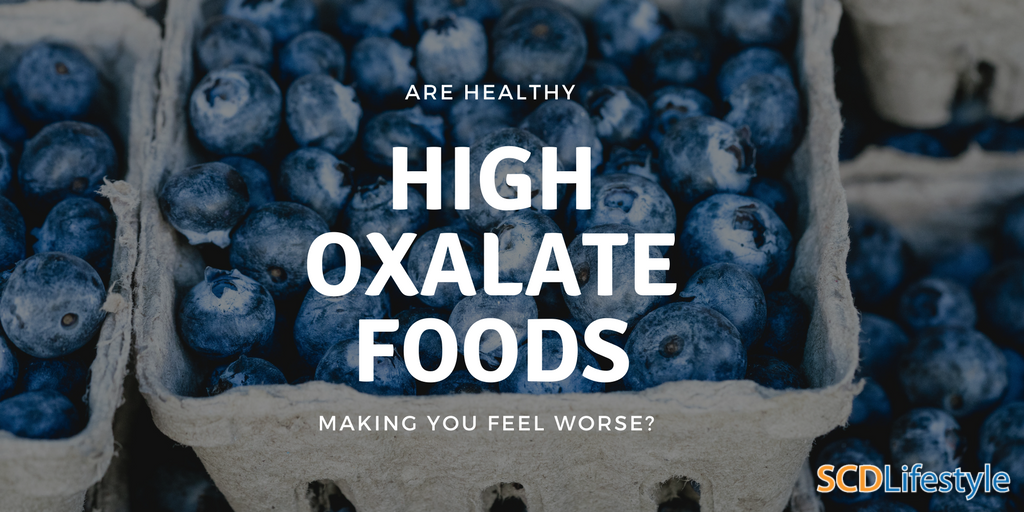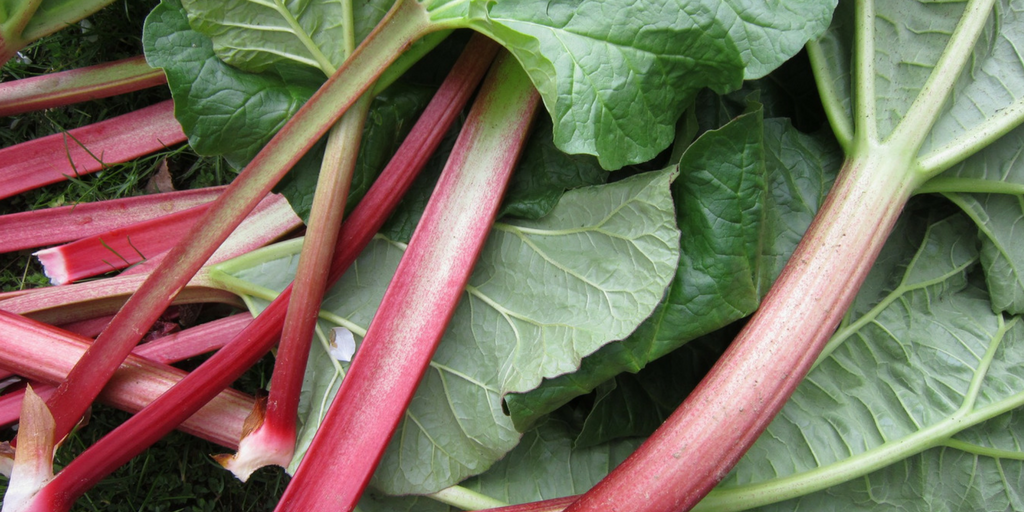What Are Oxalates? (Foods to Eat or Not Eat For Health)

Antinutrients are sneaky compounds that actively steal nutrients from your body when you eat them. Antinutrients include things like lectins, phytates, and oxalates (what we’ll be talking about today).
The scariest thing about antinutrients is that unlike something really bad like margarine — which can be easily avoided entirely on a whole foods diet – antinutrients are in the “healthiest” foods…
- Legumes
- Nuts and seeds
- Leafy greens
- Cruciferous veggies
- Blueberries
- Dark chocolate
If it sounds confusing It’s because nature has many wonders.
I’m going to break down what oxalates are, what are high-oxalate foods, how does a low-oxalate diet work and should you even try to eat one?
What Are Oxalates?
Oxalates (or oxalic acid) are a naturally occurring compound in foods like spinach and chard. They are also produced in small amounts by the liver.
The role of oxalates and other antinutrients is to provide protection for plants against predators – everything from harmful bacteria to insects, animals, and even humans.
They provide protection to plants in a few different ways.
First, antinutrients often cause a bitter taste in foods that deters people and animals from eating them (think the bitter flavor of beet leaves, which are very high in oxalates).
Beyond just a bitter flavor, antinutrients can also prevent the proper digestion and absorption of foods.
Have you ever eaten blueberries or strawberries and noticed little seeds in the toilet bowl? Seeds often contain antinutrients that stop the body from being able to break them down – they are passed through the digestive system unscathed.
Why? To help ensure that seeds needed for the propagation of plants aren’t digested by hungry people and animals. When birds or bears feast on blueberries, the seeds are still viable, even after being pooped back out!
In high enough concentrations, antinutrients can make you sick and can even be poisonous. In fact, it’s a very high concentration of oxalates that make the leaves of rhubarb poisonous. And phytates in undercooked beans make people sick every day.
But the sneakiest trick antinutrients play on us? When you consume antinutrients in plant foods, they prevent you from absorbing any beneficial nutrients that are present in the rest of the food.
Oxalates specifically bind to other minerals (like calcium) and prevent your body from absorbing them.
“For example, although the calcium in spinach is 115 mg per half cup cooked, because of the interference of oxalic acid, you would have to eat more than 16 cups of raw or more than eight cups of cooked spinach to get the amount of calcium available in one cup of yogurt.”
What Happens If You Consume Oxalates?
An “oxalate-free” diet is impossible – oxalates occur in varying amounts in almost all plant foods. If you eat food, you’re almost certainly consuming oxalates in some amount.
In very large quantities, oxalates can be toxic – like in the leaves of the rhubarb plant.
However, this would require as much as 10 pounds of rhubarb leaves (raw!) – containing altogether about 22 grams of oxalates – to reach toxic levels for a 130 pound woman.
Typically, Americans consume oxalates in much smaller amounts – around 200-300 mg per day.
However, oxalates can cause issues even in smaller quantities – the most common condition associated with excessive oxalates in the diet is kidney stones.
Oxalates are directly correlated with the formation of the most common type of kidney stones – calcium oxalate stones. These form when oxalates bind with calcium in the bloodstream.
If you’ve had kidney stones, you know it – they are incredibly painful. The worst thing about kidney stones is that if you’ve had them once, you’re more likely to develop them again.
That’s why, if you do develop stones, your doctor might recommend a low-oxalate diet with the goal of keeping oxalate intake below 50-100 mg per day.
Other conditions linked to excessive oxalates include
- Painful inflammation
- Interference with the function of glutathione (sometimes called our master antioxidant)
- Lipid peroxidation (linked with atherosclerosis)
- Painful joint deposits
You might be thinking that oxalates sound all bad – but, like with most things, there is another side to the story.
Potential Benefits of Oxalates
Here’s something interesting about oxalates… you don’t only acquire them through the food you eat.
Your body also produces oxalates on its own, in the liver.
Why would our body manufacture an antinutrient?
The truth is – scientists and researchers aren’t totally sure yet. One leading theory is that oxalates act as “chelators” – meaning they help carry toxins out of the body.
Too far fetched?
Fiber was once also considered an “antinutrient” and food manufacturers actively worked to reduce the fiber in foods – cereal and flour were touted as “low in fiber.” Today we know that insoluble fiber in plant foods has many benefits.
While oxalates aren’t yet well understood, they, just like any other food or compound, shouldn’t be strictly classified as “good” or “bad.”
Like anything else, when considering oxalates one must also consider:
- Healthfulness of the overall diet
- Proportion of high-oxalate to low-oxalate foods
- Food preparation and quality
- Personal likes and dislikes
- And perhaps most importantly – other factors that impact how a particular individual handles oxalates
Should You Care About Oxalates?
Most healthy people eating a varied diet don’t need to worry about oxalates. They’ll consume, on average, 200-300 mg of oxalates per day with no health issues as a result.
But there are 2 classes of people who DO need to be aware of the potential risks of excessive oxalates:
- Those who follow a restricted diet and may therefore eat a larger than average amount of oxalates
- Those who have health conditions that impact their ability to properly handle oxalates that are consumed
Examples of people in group 1 include those strictly following a diet like SCD, AIP, GAPs or Paleo, or a leaky gut diet, or something like raw veganism.
People in group 2 include those with autoimmune conditions like MS, Crohn’s, Celiac, UC, psoriasis, eczema, lupus, rheumatoid arthritis, and more; leaky gut; IBS; intestinal dysbiosis; SIBO; and kidney stones. (This list is not comprehensive – if you’re dealing with any type of inflammatory or chronic condition, you may want to continue reading).
And if you’re in the middle of the Venn Diagram (meaning you fall into both groups 1 and 2 – which many people do) then you need to be doubly mindful of oxalates.
Oxalates and Leaky Gut
Increased intestinal permeability, or “leaky gut” as it is commonly called, occurs when the tight junctions between the cells that make up the intestinal lining are damaged and become loose. Gaps between the cells allow large particles that should remain in the digestive tract to seep into the bloodstream.
(Not sure if you have leaky gut? Take this free quiz to learn more).
In people with a healthy gut, only a very small amount of the oxalates consumed from food are absorbed into the bloodstream from the gut. However, in people with leaky gut, intestinal dysbiosis (abnormal bacteria in the gut) or inflammation, the rate of absorption of oxalates might rise from the normal level of 1 to 2 percent to as high as 40 to 50 percent.
That means that if 2 people – one with leaky gut and one without – eat the exact same meal, one will absorb more oxalates than the other.
At higher concentrations, the oxalates can cause damage – the same things we discussed earlier like kidney stones, inflammation, and joint pain.
In fact, a 2005 study showed there was a link between IBS and the development of kidney stones. The study found that those with kidney stones had a 2.48 time greater chance of later being diagnosed with IBS.
This study got me thinking – does having kidney stones increase your chance of IBS – or is it really that both IBS and kidney stones are related to a single root cause… leaky gut.
I’m not the only one who has wondered.
According to this study, those with IBD have a 10 to 100 fold greater chance of developing kidney stones than the general population. But – the researchers found that supplementing these patients with a probiotic helped reduce their chance of developing stones.
Why? The “good bugs” in the probiotic helped to block the absorption of oxalate.
It’s just one more example of how important a healthy gut and diverse microbiome are for the health of our entire body.
Hundreds of conditions – from kidney stones to migraines to skin disorders, depression, fatigue, and more are linked to gut health. You can learn more about that here.
Oxalate Overload on a Restricted Diet
Even if your gut is perfectly healthy, however, there is another reason you might be consuming an excessive amount of oxalates – your diet.
Some of the “staple” foods on diets like SCD, GAPs, and Paleo – and even things like veganism – are incredibly high in oxalate.
A few of the highest oxalate foods:
- Dark chocolate
- Nuts
- Berries (like blueberries, strawberries, and blackberries)
- Citrus fruits
- Kale, spinach and other dark leafy greens
- Beets
- Sweet potatoes
- Zucchini and other summer squash
Further complicating the issue is the fact that oxalate values of different foods are not well reported – and the method of preparation changes the oxalate content of food as well.
For example, cooked spinach or soaked beans have far less oxalate than does raw spinach or unsoaked beans.
But this much is clear – if you’re following a diet that emphasizes these high-oxalate foods, you may quickly find yourself consuming large amounts (just 2 cups of raw spinach contain over 600 mg of oxalate – double the daily intake of an average person).
If you’re following a diet that includes lots of high-oxalate foods, you may want to be more mindful of the quantities you eat and how you prepare them – especially if you have symptoms or risk factors for leaky gut. (Find out if you do here).
Think You’re Eating Too Many Oxalates?
If you’re worried about over consuming oxalates – either because of a leaky gut, your diet, or a combination of both – the most important thing you can do is not panic.
Kale, blueberries, and sweet potatoes are still healthy foods – and they still have a place in your diet. They contain important nutrients, vitamins, minerals and phytochemicals.
Remember, oxalates may even have some benefits that science hasn’t caught up to yet.
If you need to limit your oxalates – because you’re following a special diet or because you have leaky gut – here are some action steps you can take right now:
- MOST IMPORTANT: Get started healing your gut. Gut healing is most effective when you use a multi-faceted approach that combines dietary interventions, lifestyle changes, and smart supplementation. Learn more about our recommendations here.
- Cook, soak, ferment, and sprout your food. All of these steps help to reduce the content of oxalates and other antinutrients in your food.
- Consider outside support. A low-oxalate greens powder can provide the important nutrients and phytochemicals that high-oxalate foods provide, without the oxalates. This is a great choice for people who:
- Have severe digestive issues like IBD or SIBO
- Have had kidney stones in the past
- Have multiple food intolerances
- Have a hard time digesting high-fiber foods
- Have malabsorption or low stomach acid
- Need extra nutrients due to illness or sport
Using a greens powder can help meet your nutritional needs without compromising your health otherwise.
The brand we recommend is Dr. Cowan’s Garden Low-Oxalate Greens Powder – it is made from a blend of 3 low-oxalate greens: mustard greens, collard greens and lacinato (dino) kale. The greens are blanched to further reduce the oxalate content before it is pulverized. Just one teaspoon is equivalent to a full serving of fresh vegetables.
The most common way we see people consume greens powders is in a smoothie or protein shake – but consuming large quantities of raw fruits and veggies can send your oxalate intake through the roof.
Instead of in a green smoothie, here are a few ways I incorporate greens powder in my own diet:
- Sprinkled over eggs
- Mixed into a mug of bone broth
- As a rub for meat, or sprinkled over cooked meats
- As a seasoning for roasted or steamed veggies
Give it a try (you can even use our friends and family code SCDLIFESTYLE for 15% off) and let us know what you think.
After reading this, I hope you feel confident in understanding what oxalates are, how you’re consuming them – and if you may need to be more mindful of them.
Are you following a low-oxalate diet? Have more questions about the role of oxalates and other antinutrients? Ask your questions by leaving us a comment.
-Steve
Did You Like this Article?
Subscribe to our newsletter to receive email notifications, some ways to find relief, and next steps.



